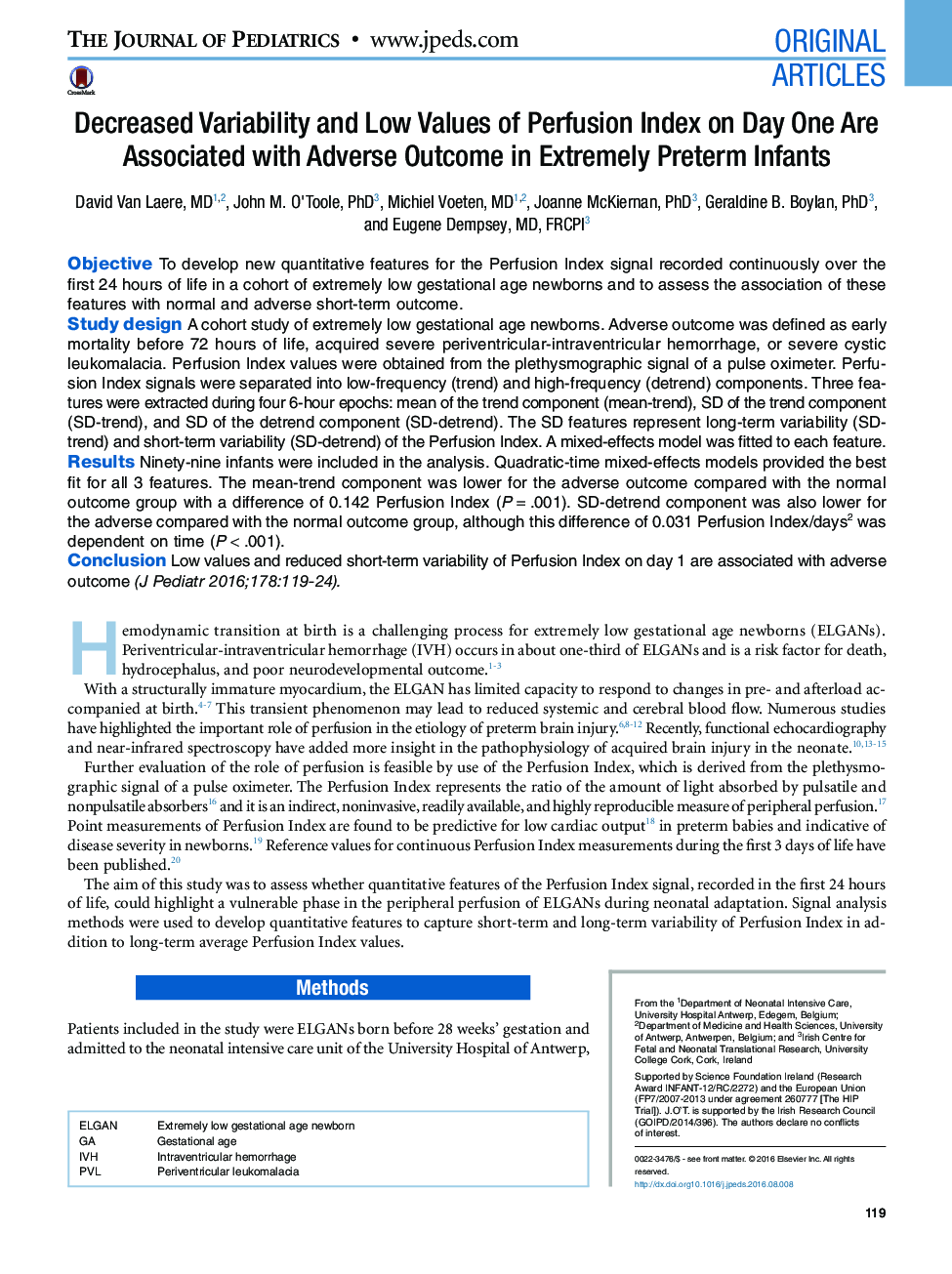| کد مقاله | کد نشریه | سال انتشار | مقاله انگلیسی | نسخه تمام متن |
|---|---|---|---|---|
| 5719763 | 1607422 | 2016 | 7 صفحه PDF | دانلود رایگان |
ObjectiveTo develop new quantitative features for the Perfusion Index signal recorded continuously over the first 24 hours of life in a cohort of extremely low gestational age newborns and to assess the association of these features with normal and adverse short-term outcome.Study designA cohort study of extremely low gestational age newborns. Adverse outcome was defined as early mortality before 72 hours of life, acquired severe periventricular-intraventricular hemorrhage, or severe cystic leukomalacia. Perfusion Index values were obtained from the plethysmographic signal of a pulse oximeter. Perfusion Index signals were separated into low-frequency (trend) and high-frequency (detrend) components. Three features were extracted during four 6-hour epochs: mean of the trend component (mean-trend), SD of the trend component (SD-trend), and SD of the detrend component (SD-detrend). The SD features represent long-term variability (SD-trend) and short-term variability (SD-detrend) of the Perfusion Index. A mixed-effects model was fitted to each feature.ResultsNinety-nine infants were included in the analysis. Quadratic-time mixed-effects models provided the best fit for all 3 features. The mean-trend component was lower for the adverse outcome compared with the normal outcome group with a difference of 0.142 Perfusion Index (Pâ=â.001). SD-detrend component was also lower for the adverse compared with the normal outcome group, although this difference of 0.031 Perfusion Index/days2 was dependent on time (Pâ<â.001).ConclusionLow values and reduced short-term variability of Perfusion Index on day 1 are associated with adverse outcome
Journal: The Journal of Pediatrics - Volume 178, November 2016, Pages 119-124.e1
